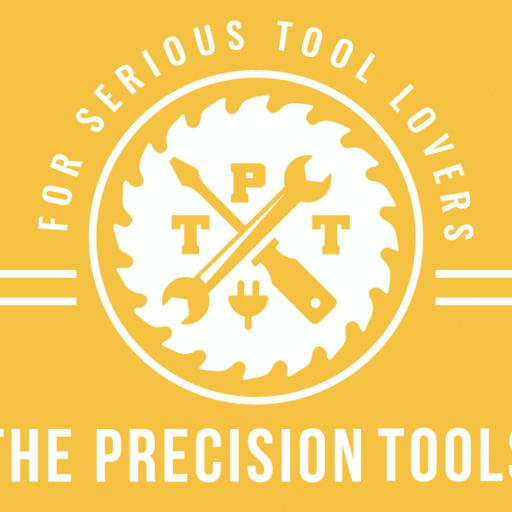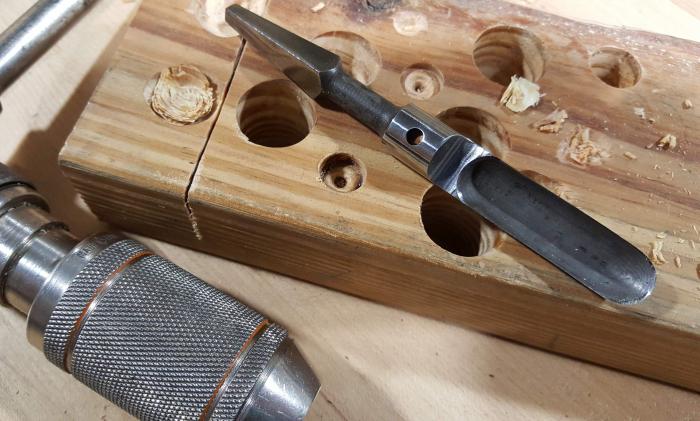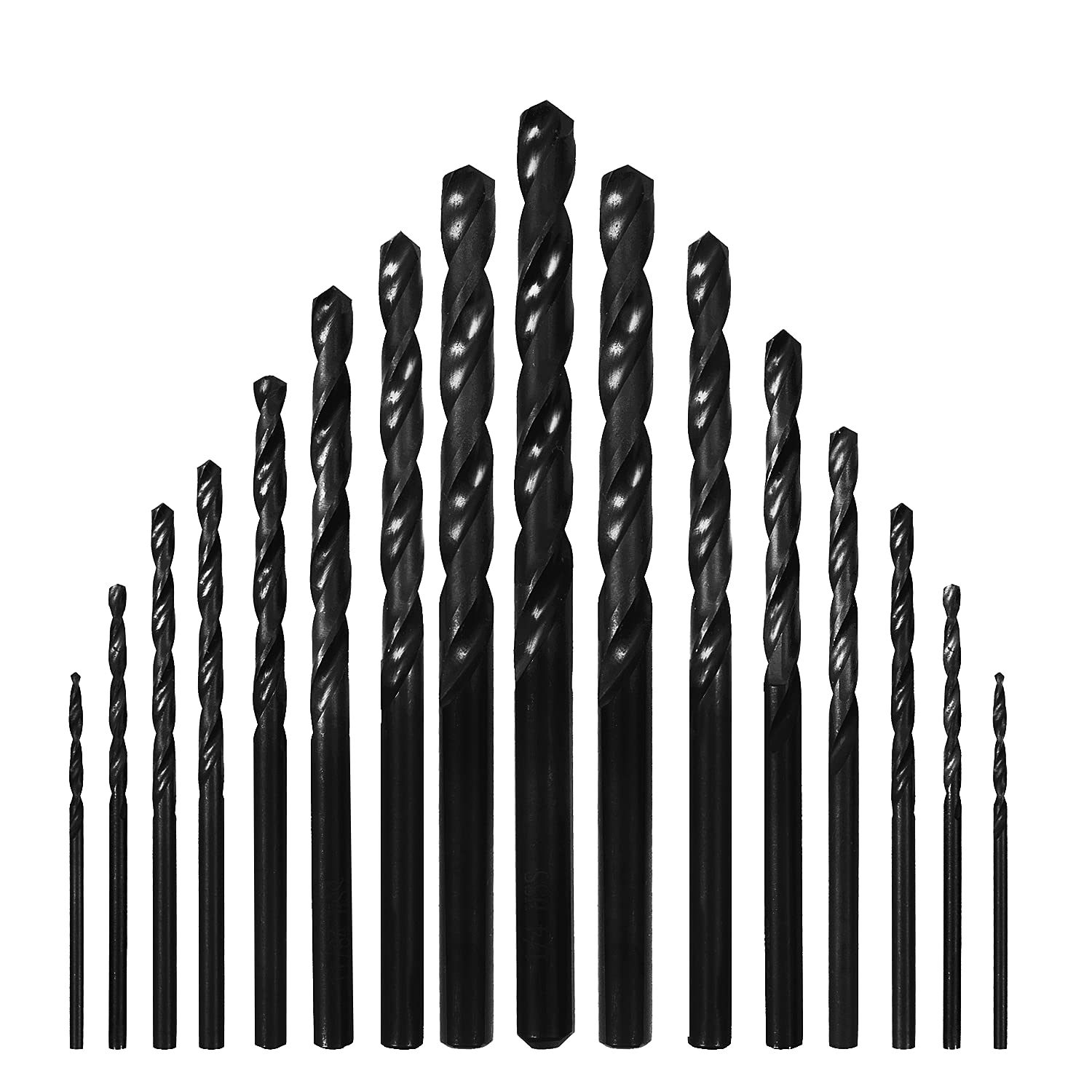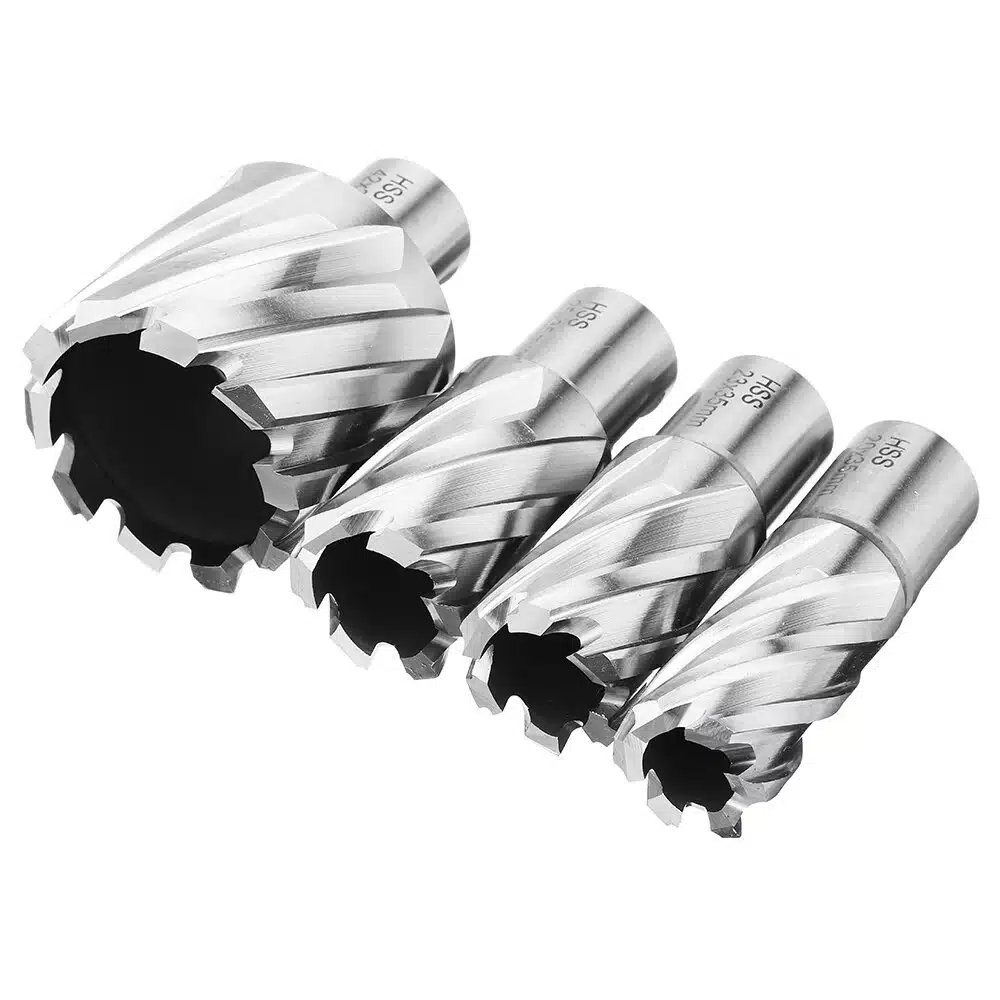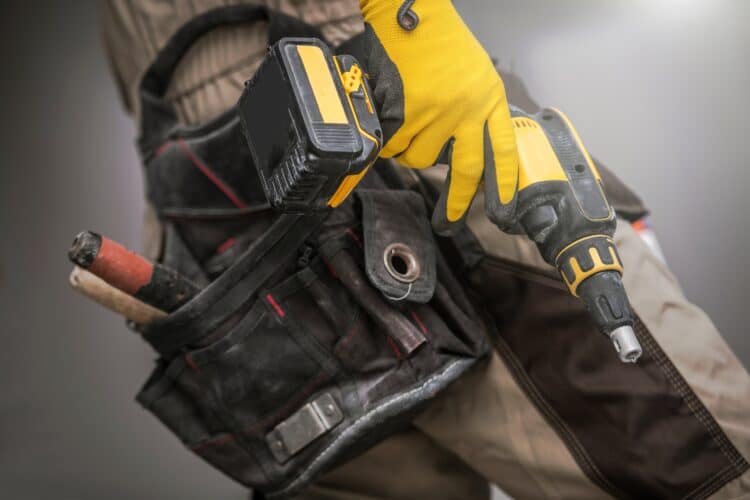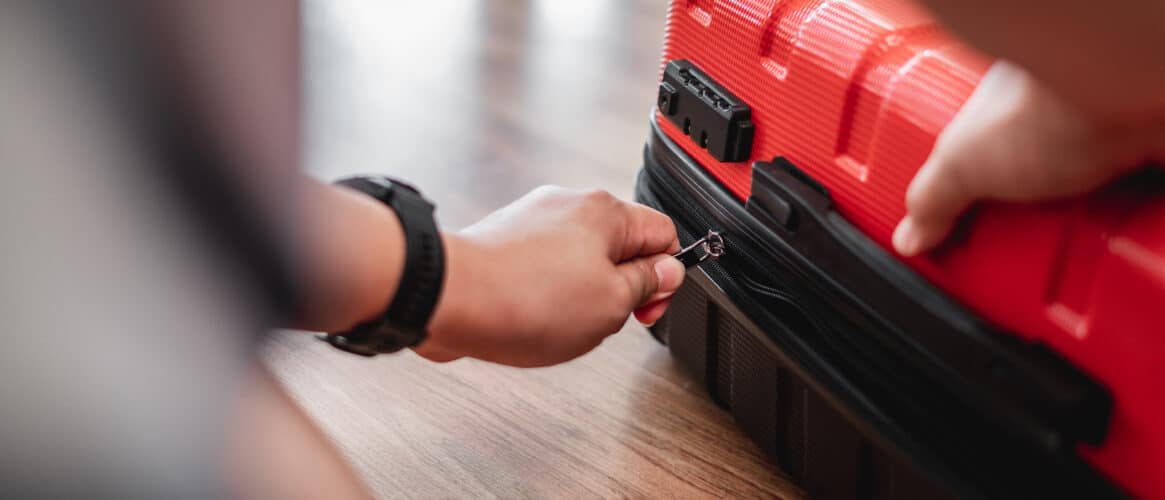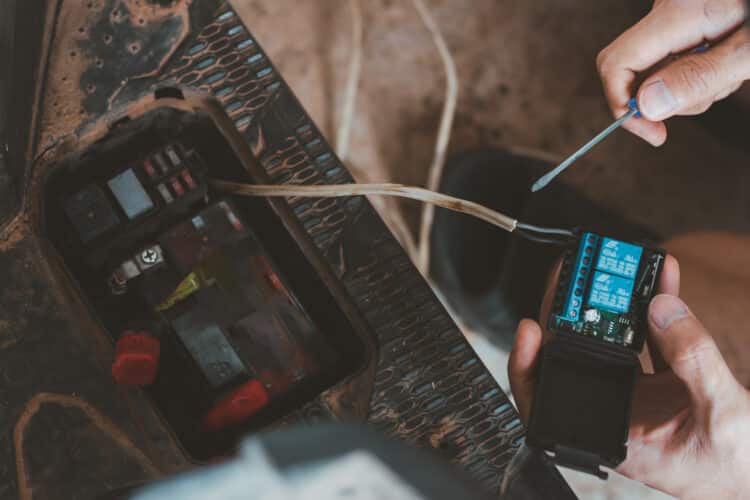Whether it’s a loose screw or a wooden board, there are plenty of tasks that require us to use a drill. An important thing to remember is that there are different drill bits for drilling holes in metal and wooden objects. So let’s drill into the different types of drill bits and their uses. We will get specifically into the difference between wood and metal drill bits.
What is a Drill Bit?
A drill bit is a cutting tool that can be used to make holes in objects. They come in different shapes and sizes, but the holes they drill are always circular.
The Basic Features of a Drill Bit
There are some core characteristics that are present in every type of drill bit:
- The spiral to control the rate at which you remove chips – the faster the spiral, the higher the rate (and vice versa).
- The point angle to cut holes. Small point angles are suitable for soft surfaces, whereas larger point angles are better for harder surfaces.
- The lip angle that provides support as you cut.
- The length that helps you determine how deep a cut you want to make.
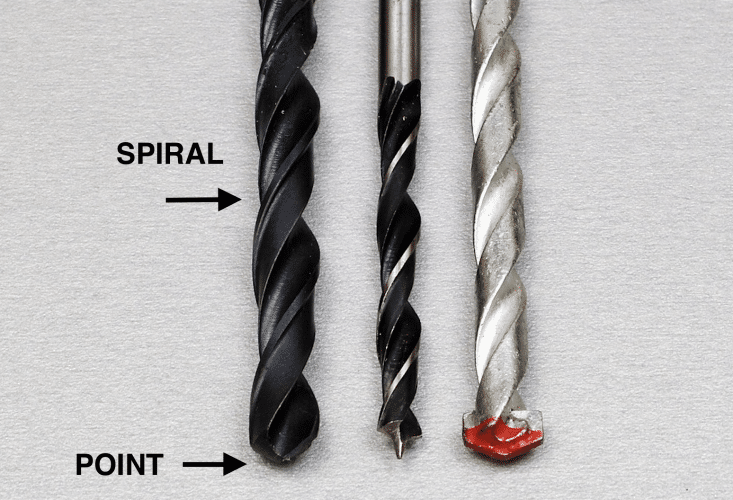
Wood Drill Bits
As the name suggests, wood drill bits help drill holes in wooden objects/surfaces. They’re designed to ensure that the drill cuts through the wood without causing splinters to chip off or splitting the wood entirely. Even within the category of wooden drill bits, there are different types.
Lip & Spur Drill Bit
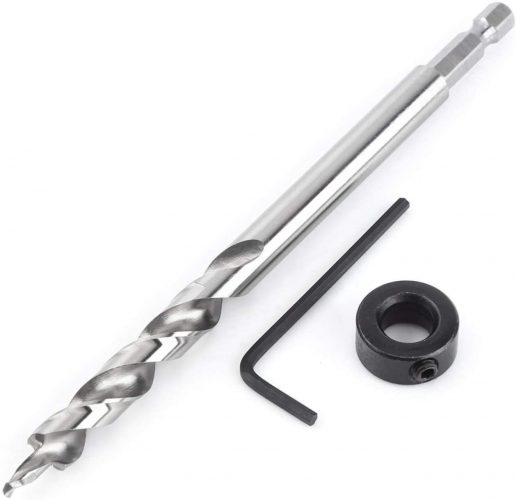
The lip and spur drill bit feature a spiral so that the holes you drill will also contain a spiral pattern.
Spade Bit
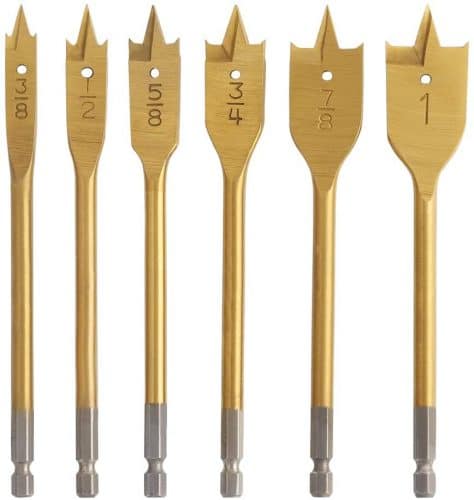
If you need to bore through a piece of wood, a spade bit comes in handy. They generally have a flat shape with two different cutters.
Spoon Bit
Spoon bits have a curved, point angle head and can help polish out a drilled hole. There are certain wood drill bits designed only to drill holes in trees. They are generally too soft and have low pressure and cannot be used on harder surfaces, including hardwoods.
Metal Drill Bits
Metal drill bits are more powerful than wood drill bits and are powerful enough to drill through wood and metal. However, if you’re drilling through wood with a metal drill bit, you have to be very careful to ensure that you don’t break or damage the wood. There are a number of different types of metal drill bits:
Center & Spot Drill
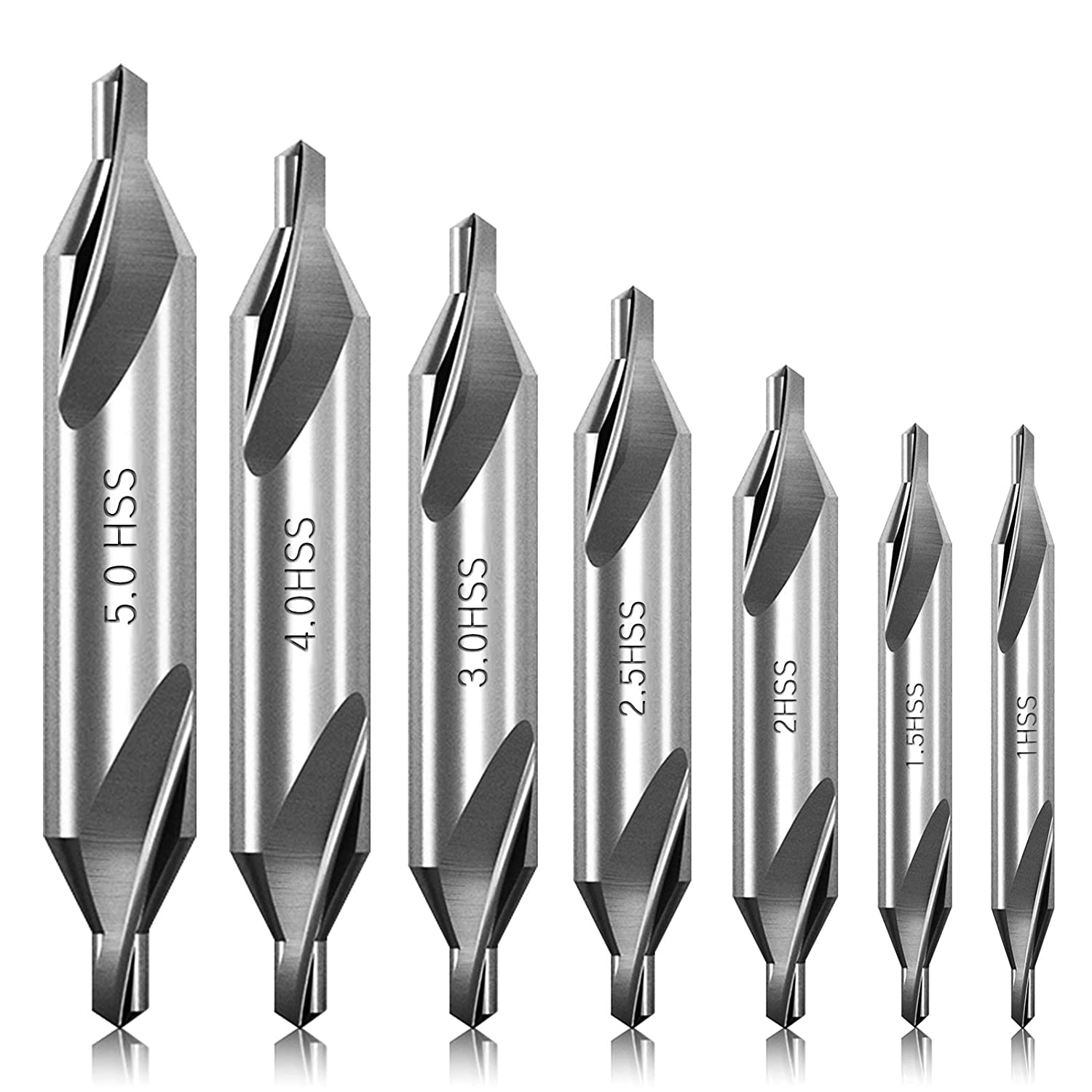
The pointed tip of the drill bit helps you mark the exact spot where you need to drill a hole.
Core Drill Bit
The core drill bit is known for two main functions:
- Enlarge pre-existing holes
- Make cross-sections as you drill a hole
Indexable Drill Bit
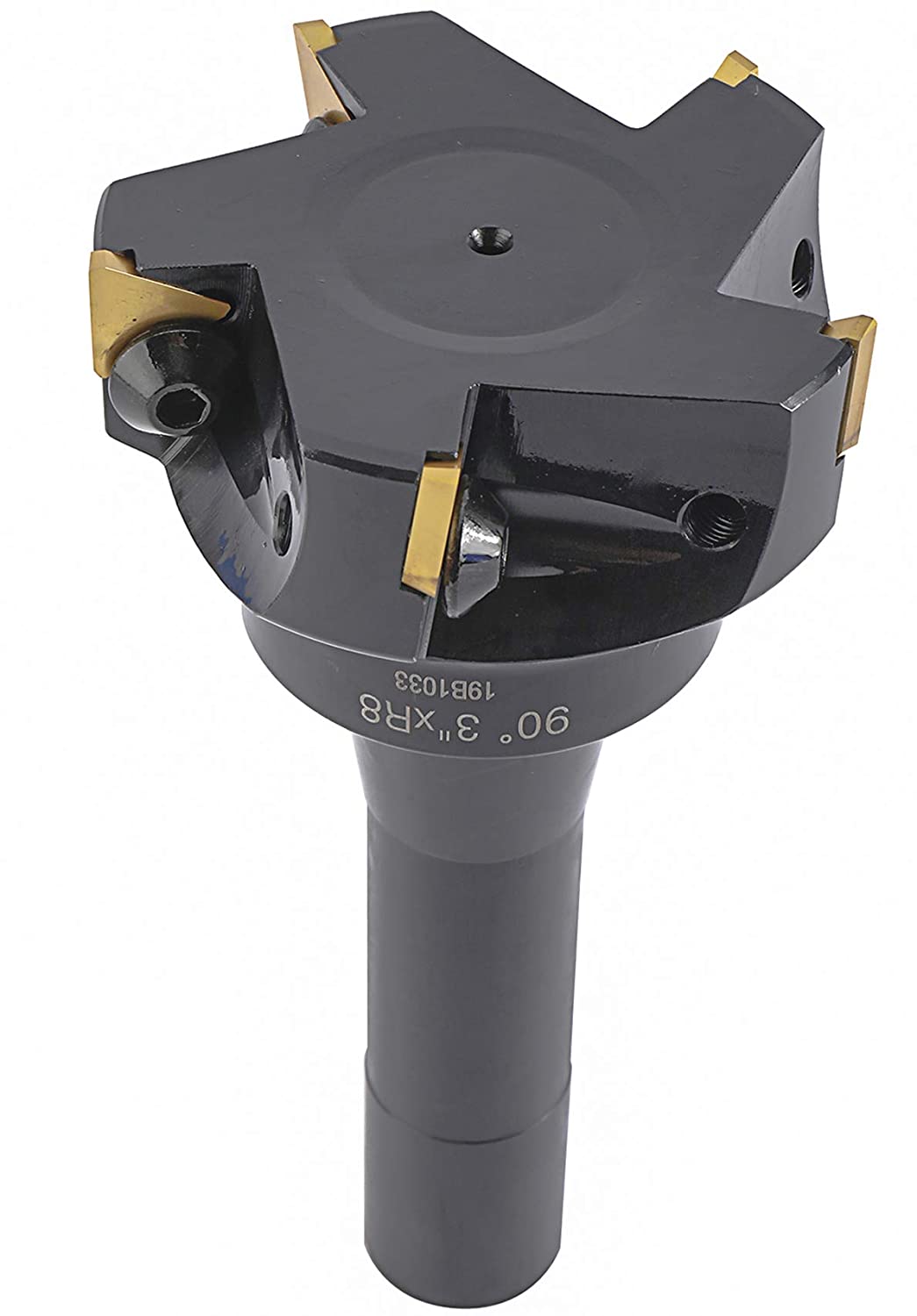
The indexable drill bits are quite expensive and have 2 inserts: for the exterior and the interior radius of the hole you’re drilling. The precision it offers is worth the additional expense.
Metal Drill Bit Finishing
The most common types of finishing for metal drill bits are:
- High-Speed Steel (HSS) for soft metals, wood, and plastics
- Cobalt drill bits for drilling through hard metals, such as steel
- Black-oxide coated drill bits are rust-free, durable and can be used on different surfaces
- Titanium coated drill bits create less friction as you drill, making them suitable for drilling through wood and softer metals
- Carbide tipped drill bits have a sharp end and can drill through tiles and other surfaces.
Difference Between Metal & Wood Drill Bits
Now that we have a basic understanding of exactly what metal and wood drill bits are, we can dive further into what their core differences are:
- While wood drill bits are too soft to drill through metal, metal drill bits can be used on any surface. However, if you’re using a metal drill bit on wood, you’ll have to reduce the pressure to prevent damaging the wood.
- The wood drill requires less force (and therefore, less pressure) to drill since it’s used on a relatively softer medium. Metal drill bits require more energy because, well, you’re drilling through metal with them.
How to Distinguish Between Metal & Wood Bits
It can be difficult to tell metal and wood drill bits apart since the two have a similar factory finish. However, since they’re both used for different purposes, it is important to know how to tell them apart:
Wood drill bits have two defining features: a spar and a lip. The spar keeps the drill bit centered as you drill and prevents it from ambling off to damage some other section of the wood. The lip is the chisel of the drill bit – it cuts through the wood fibers to create a hole with a smooth finish instead of little flakes sticking out.
Generally, wood bits may either be silver or black, but they can be found in other colors, so don’t rely on that as the only point of differentiation.
Metal drill bits are characterized by an angular tip. They may have a black, copper or gold finish, but again, colors may vary and are not an ideal differentiating point.
End Note
Knowing the core differences between wood and metal drill bits will help you figure out the right tools for your particular project. Once you have the right tools, you can drill through whatever surface you’re working on easily without actually damaging the surface.
Especially if you’re working with metal, you don’t want to end up with a wood drill bit that won’t even be able to scratch the surface let alone drill the hole.
Knowing the differences between the two types of drill bits is essential, regardless of whether you’re a professional carpenter or just finishing a DIY project at home.
Apart from whether a drill bit is for wood or metal, you also need to consider the size and the finish in order to get the job right. The size will be based on the type of holes you need to create and how big your surface is.
Using a large drill bit on a tiny surface will destroy the entire surface rather than just drilling a hole. The shape and finish of the drill bit are also based on your purpose: for spiral holes, you’ll need a spiral-tipped drill bit.
For more sensitive surfaces, you’ll need a titanium-tipped or another drill bit to ensure that you don’t damage the object you’re working on.
Drill Bit FAQ
Can I Use A Wood Drill Bit On Metal?
It is mentioned above that you cannot use a wood drill bit on metal but can use metal on wood.
To elaborate, if you inadvertently use a wood bit on a metal surface you are likely to destroy the bit. It may be possible to get the job done if you are working on soft or thin metals. However, it would definitely be at the price of the drill bit being used.
And although a metal drill bit can be used on wood or any material for that matter, it should be noted that using a metal bit on wood may increase splintering and tear-out. Just like with the wood drill bit on metal this can depend on the wood type and diameter of the bit being used.
So, can it be done? Possibly. Should it be done? No.
What Are The Strongest Drill Bits?
It isn’t necessarily about the strength of a bit, because it should be based on the job you are doing. However, just for your information.
Cobalt is a type of HSS or High-Speed Steel bit. The bit includes 5-8% cobalt mixed into the base material. Because of this material make-up, they are not designed for general purpose use.
Carbide is the hardest material, but is also the most brittle.
